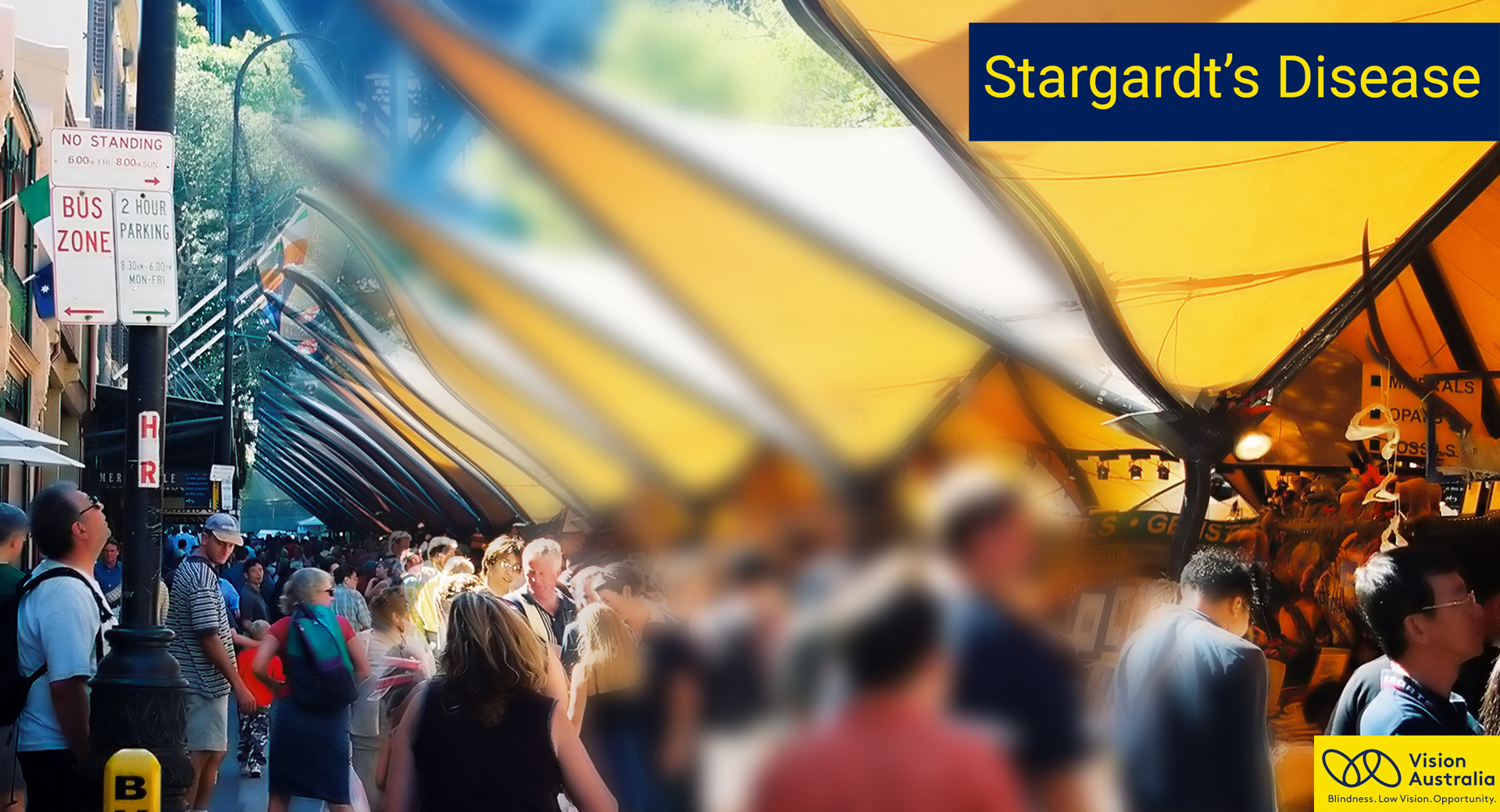
What is Stargardt's disease?
Stargardt's disease is a type of macular degeneration that typically surfaces before the age of 20. It causes a progressive loss of central vision of both eyes, but does not affect peripheral vision.
These images give an impression of what someone with Stargardt’s disease may see compared to someone with normal vision.
Click below to download the full Accessible Fact Sheets for Stargardt's disease:
Accessible Word version (Word, 1MB) - Stargardt's disease
Accessible PDF version (PDF, 97KB) - Stargardt's disease
What are the symptoms?
Symptoms may include:
- Blurred vision
- Deterioration of central vision
- A central blind spot
- Diminishing ability to perceive colours
- Difficulty adapting from bright sunlight to a dimmer room
Who is at risk?
This disease is usually an inherited, autosomal recessive disorder. In order to pass Stargardt's disease to the next generation, both parents must carry the recessive gene. There is also a rarer dominant form of Stargardt's disease.
Can it be treated?
Unfortunately, there is no known cure for Stargardt's.
Laser treatment is sometimes recommended, but it will not restore vision or stop the progression of the condition.
Contact Us
Contact us early and get the support you need. For more information on Vision Australia’s services call our helpline on 1300 84 74 66 or email [email protected]. You can also connect with our services here.










